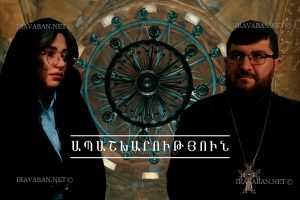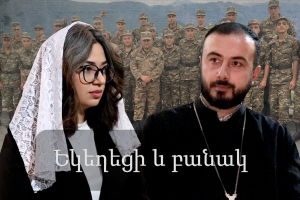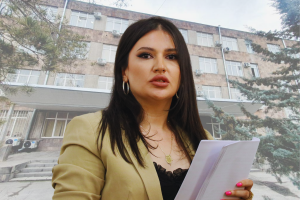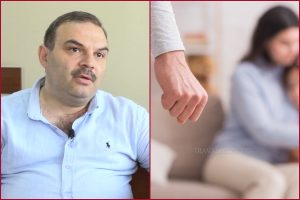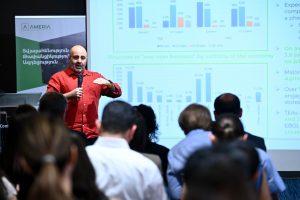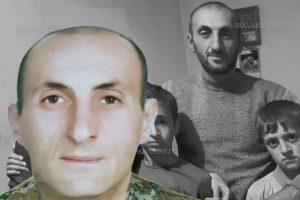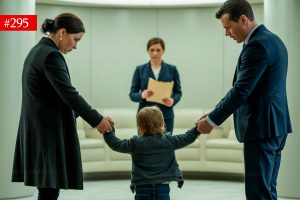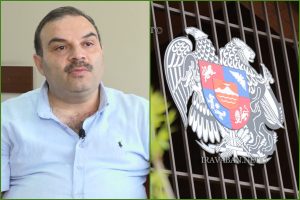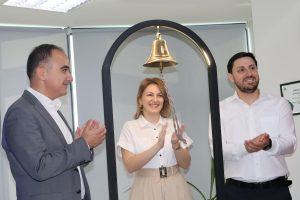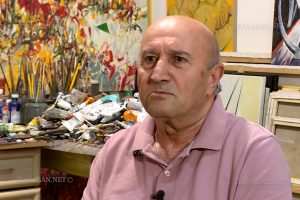As part of the “Church and Law” interview series, Iravaban.net spoke with Father Shmavon Ghevondyan, the spiritual shepherd of St. Hakob Church of the Araratian Patriarchal Diocese, about the preservation of spiritual and cultural heritage.
– What are the main directions for preserving the spiritual and cultural heritage of the Armenian Apostolic Holy Church?
– It’s no secret that since the adoption of Christianity, culture has been closely intertwined with the church, its activities, rituals, and cultural expressions. If we set aside certain secular manifestations, particularly in poetry or painting that emerged more prominently from the 18th century onwards, until then, Armenian culture as a whole was shaped within the Armenian Apostolic Church. This includes miniature painting, the creation and editing of sacred images, and of course, writing and literature, which were primarily produced in monasteries. The educated class of that time consisted mainly of clergy, who were capable of creating true masterpieces. Our culture is fundamentally a reflection of Armenian identity and spirituality.
– During the Soviet era, pressures on the church intensified. How was cultural heritage preservation carried out during this challenging period?
– While some artifacts came under state protection, it’s well known that in the 1930s, when persecution against the church began and atheism was at its peak, we lost many invaluable monuments. For instance, there was a church where the Moscow cinema now stands, which was exceptional for its frescoes. These were 12th-century murals; sadly, only a few photographs have survived. When experts from Russia came to evaluate this temple – to determine whether it could be demolished – Russian scientists concluded that the temple should absolutely not be demolished, but preserved. However, in an overzealous attempt to be “more Soviet than the Soviets,” some local authorities decided they knew better and blew up that church. Nevertheless, many clergy members risked and even sacrificed their lives to protect cultural monuments and artifacts from destruction or confiscation.
– After independence, several churches and monastic complexes in Artsakh were returned to the Armenian Apostolic Holy Church, and the church assumed the role of preserving Artsakh’s spiritual and cultural heritage. What is the situation after the forced exodus of Armenians from Artsakh? Is it possible to preserve Armenian culture there in any way?
– Is it possible to preserve any Armenian presence there at all? I’ll answer that question with another question: unfortunately, no. We cannot give a positive or clear answer to this question in any way. No one should be misled by statements suggesting that the neighboring state can or will preserve our heritage. They will do everything in their power to erase all traces of Armenian presence there. Through artificial renovations, they might one day open these sites and declare them Udi or ancient Albanian. They’ll claim, “See, the Armenians stole this from us.” Make no mistake, they will either demolish or renovate any temple, suddenly “discovering” a board or a grave with an “ancient inscription” by which they’ll attempt to prove, “Look, this is the evidence that ‘the Armenians stole it’.” This is a well-known method of historical revisionism and cultural appropriation. As much as possible, the church tried to preserve our heritage. Take Dadivank, for example, where for about two years, the clergy fought tooth and nail, literally risking their lives, and thanks to their presence, they were able to ensure the preservation of that temple. But we are left with what we have now. However, as long as these temples stand, we hope that history will remember that Armenians lived there. And I’m not afraid to say this – yes, I’m certain that a day will come when we must return there. You could say I’m one of those Armenians who believes in reclaiming what’s rightfully ours.
– There are demolished churches, abandoned churches, and people often ask: what is the Mother See doing to preserve them?
– The Mother See today doesn’t have as much authority as people might think. Yes, the churches were officially transferred to the care of the Mother See, but it doesn’t have the unilateral authority to make decisions about renovating a demolished church, as these are considered cultural monuments. The Ministry of Education, Science, Culture and Sports also plays a crucial role here. In fact, it’s literally their direct responsibility to preserve and, when necessary, restore these sites. However, in many cases, restoration is far more expensive than people realize. Nevertheless, the church continually seeks means to carry out restorations and does so whenever possible.
– There are also vast collections of cultural heritage artifacts within the Mother See. What authority does the Mother See have over them? How can people access these artifacts, apart from occasions when they are exhibited on the church’s initiative?
– The artifacts kept in the Mother See – museum pieces, cultural monuments – don’t belong to the Mother See per se. They are national treasures, the wealth of our nation; the church is merely their custodian. Many of these items are housed in museums where faithful and interested visitors can see, experience, and connect with them.
– Churches and cultural artifacts are often subjected to vandalism. In your opinion, should special protective measures be implemented?
– In some Eastern cultures, they might cut off a person’s hand for theft, but what can be done to someone who deliberately desecrates or damages a sacred site? A rational person cannot commit such an act; even animals don’t engage in such destruction. I struggle to find words to describe such phenomena. Even the slightest act of defacement should be classified as vandalism and barbarism and punished accordingly – very severely. This should apply to any cultural monument, regardless of its religious affiliation.
For more details, please refer to the video.
Hasmik Sargsyan

